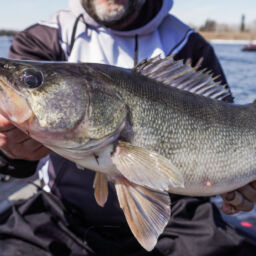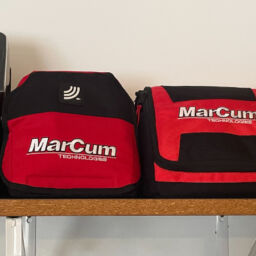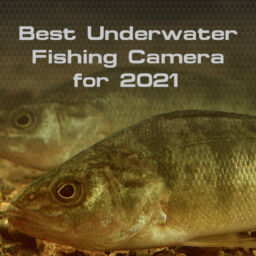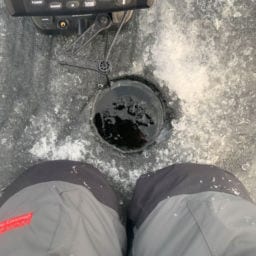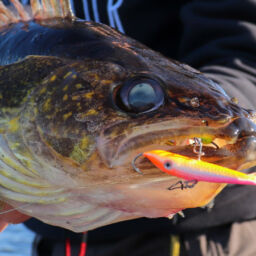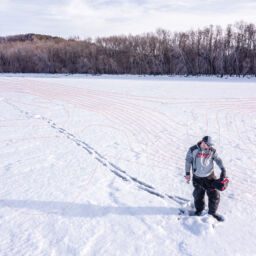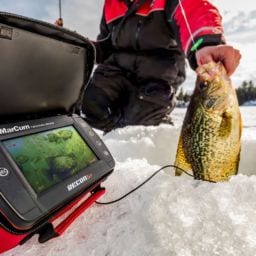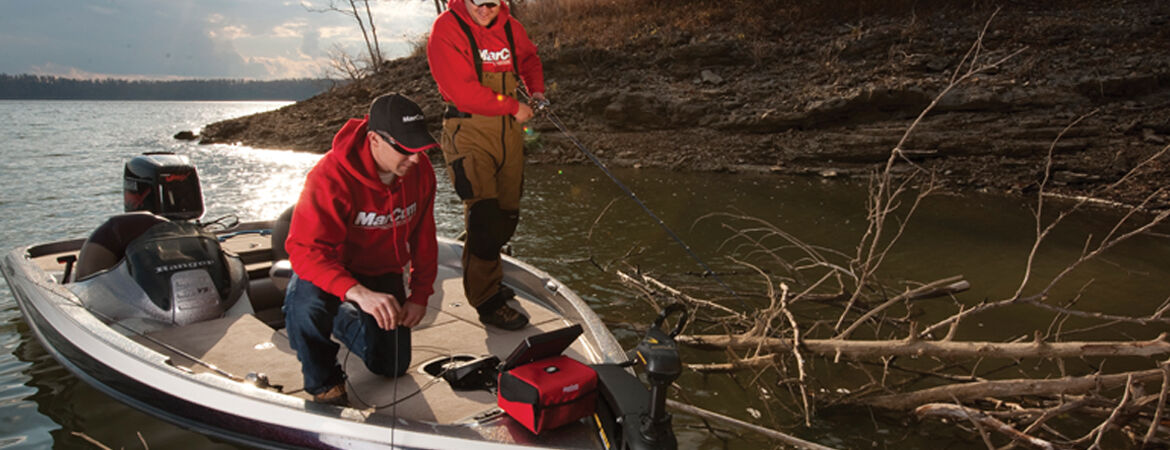
How to use an
Underwater Camera
for Open Water Fishing
Winter is coming to an end. Game fish seasons across several Midwest states have closed and ice is starting to melt. One thing’s for sure – the open water season will be here before we know it.
Just because the ice season is coming to a close, that doesn’t mean all the ice electronics need to hit the shelf until next season. Case in point – the underwater camera.
Underwater fishing cameras are recognized as a valuable tool for ice; however, they can be just as beneficial during the open water season – and for many of the same reasons. Open water electronics continue to evolve to new lengths every season but they still leave things open to interpretation. Underwater cameras, however, are capable of answering questions that other electronics cannot, as well as teaching anglers more about what they’re seeing on their electronics. They are an angler’s eyes below the surface.
The Locations
There are a variety of factors that influence fish location throughout the summer months. Locating the right cover, structure, or transition can make all the difference between catching or not.
During the open water season, factors like vegetation play a big role in fish location. Not all vegetation is created equal – specific types hold fish, while others do not. For example, coontail and cabbage are known to house crappies and walleyes, especially during the summer months.
Electronics can help locate if weeds are present – but fail to verify the distinct variety and if they are healthy. Using an underwater camera helps an angler determine which particular strains are present and if they are green and standing.
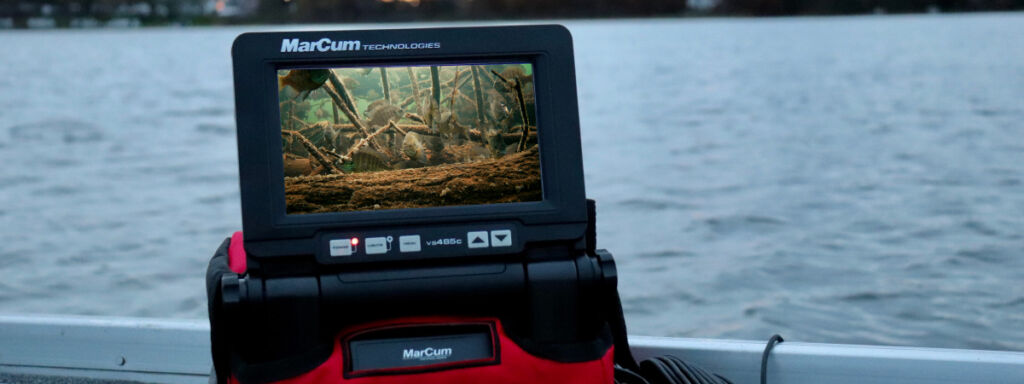
Submerged timber and man-made cribs can also act as fish magnets during certain times of the open water season (i.e. early Spring and Fall). While locating these areas comes pretty quickly with electronics, determining if fish are present is an entirely new challenge.
With these types of habitat, fish tend to hold very tight to the cover – in turn, making it difficult to determine if fish are actually there. Underwater cameras allow an angler to quickly determine if fish are present or if it’s time to move on.
Rocks, gravel, and boulders also act as attractors during the open water season. Like vegetation – not all rocks are created equal. For many fish species, certain sizes of rocks draw fish more than others. This is apparent with fish like smallmouth bass.
In some lakes they are drawn to smaller chunk rocks, while in others they hang around larger ones. By employing a boat camera, fishermen can discern which sizes and types of rocks they are seeing on their electronics.
The Lures
Many anglers recognize the importance of presentation and lure functionality during the ice season, however, this is often overlooked as soon as the ice is off the lakes. Developing an understanding of how specific lures perform below the surface is a vital key to fishing success no matter the season.
Anglers can rely on underwater marine cameras to teach them about lures and how they perform in different scenarios. For vertical presentations, learning how specific jigging cadences impart action on a lure is advantageous for a fisherman. This is particularly beneficial with artificial lures – like soft plastics.
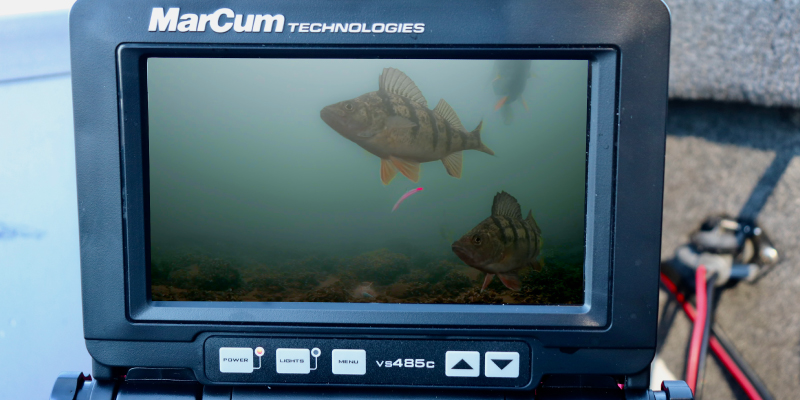
For more horizontal presentations, it’s important to recognize how factors like line type, retrieval speed, and weight impact the action of lure. Regardless of lure type or presentation, it’s important for an angler to have a clear understanding of what their bait is doing below the surface. Minute adjustments can sometimes make all the difference.
Underwater cameras give anglers the power of viewing their lures and understanding how different factors can alter their experience.
Blake Tollefson
The Fish
Aside from finding the right habitat and learning about lure presentation, underwater cameras are also great for viewing fish. In many bodies of water, different species of fish frequent the same types of locales.
For example, it’s not uncommon to find rough fish like suckers in areas where walleyes might also hang out. It’s also normal to find different species of fish that school together, like crappies and bluegills. With the help of an underwater camera, an angler can uncover what species they’re actually viewing from above the surface.
In addition to fish identification, cameras are also perfect for learning fish behavior. Fish can often work in mysterious ways. Most inquisitive anglers have asked questions like ‘why are these fish here?’ or ‘what can I do to get these fish to bite?’
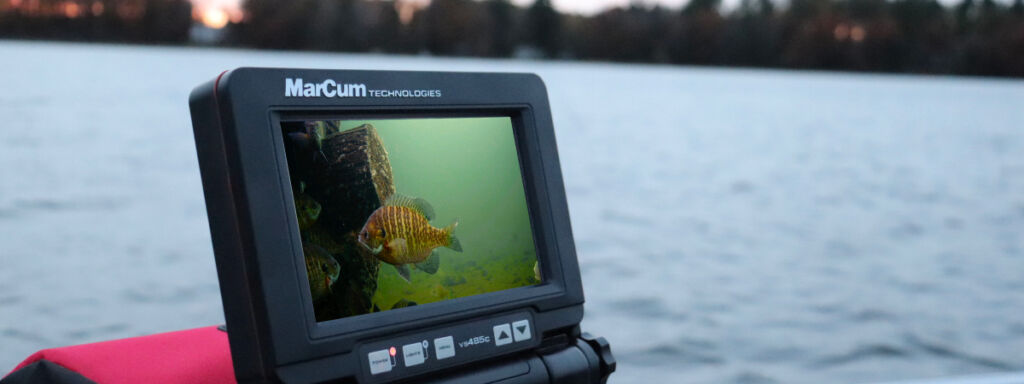
Relying on a camera to reveal this information will teach anglers so much more than just open water electronics. Seeing exactly how fish react to a specific bait or why they are where they are will only help an angler in the long run.
Don’t assume that underwater cameras are just for ice fishing. In fact, they can be just as useful to anglers when the ice leaves the lakes. They can teach fishermen about their electronics, about how fish react, as well as showing them exactly what’s going on below the surface. Consider adding an underwater camera to your open water fishing gear list.
MarCum has an expansive lineup of underwater cameras that can meet any budget or set of circumstances. The VS485c is an all-around great option for any angler looking to add an underwater camera to their open water arsenal.
This camera packs some serious punch into a budget friendly package. The 7-inch LCD screen makes it easy to view no matter the situation. With features like color kill technology, the VS485c is ideal for viewing whether the water is clear or stained.
This underwater viewing system comes standard with a 12V battery and carrying case – which is great for anglers that want mobility and portability. If a permanent option is more your style, these cameras could be mounted and powered from a boat’s existing 12V system.



